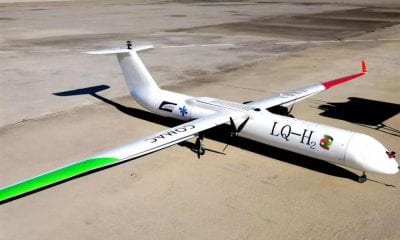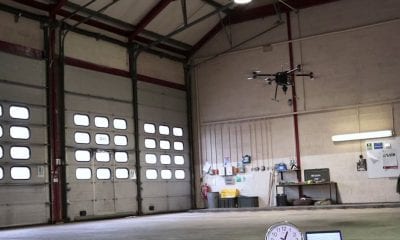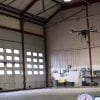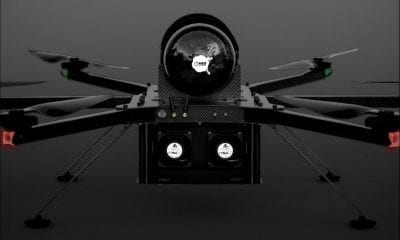
News
Challenges of Fuel Cells Use in Small Drone Propulsion
The application of various energy sources for electric engines that are used to drive small propeller drones with specific attention to fuel cells (FC) and types that are discussed in the following sections of the article.
According to the short review of principles of work, fuel cells are basically dependent on the kind of chosen energy in terms of storage and supply. However, there are many challenges and issues that are arising – as well as specific requirements of the FC drive of UAVs regarding to the generation, storage and possibilities of hydrogen and its fast refueling.
The Wide Range of Possibilities in the Contemporary Aerial Industry
One author named J. Dutczak submitted all of his findings in a paper at the Faculty of Mechanical Engineering Cracow University of Technology, PL – where he shared the interest of contemporary aerial industry which turned towards the development of drones (UAVs) in the recent years.
As he notes in the introduction part of the paper:
“For commercial use, drones have to provide much more extended flight time. A longer flight times as well as quick refuelling are the most desirable features enabling the wide range of possibilities of UAVs’ application. Drones may be used, among the others for search and rescue, aerial photography, fire protection, inspection of difficult to access areas, agriculture, police intelligence and others, hence a huge increase in interest of these vehicles are visible. The drones’ commercial market is expected to growth over the next few years, from 250000 working drones in 2017 to more than 2500000 working drones by 2021.”
The propulsion of mini UAVs places a lot of opportunities on the table, especially when it comes to lower cost, thermal signature, reduction of sound traces and lack of exhaust gases. In times when the contemporary lithium-polymer batteries are quite limited in regards to their energy rates, the combinations of batteries and fuel cells (FC) in hybrid propulsion systems are tried to be applied (in this paper).

Energy density of different sources
Micro-Jet and Micro-Turbine Engines are Seen More and More in Today’s World
What’s also interesting is the author’s take on the use of micro-jet and micro-turbine engines, which according to him, are more and more seen in today’s technology. What started with a couple of military projects is now a possibility that many look to embrace, especially because of the efficacy of such propulsion systems.
A battery system has more than 70% efficiency, a fuel cell system has a 45% efficiency and a combustion engine is able to ramp it up by 40% – which is why drones use battery-powered systems such as Lithium polymers and Lithium ion batteries. However, when it comes to the actual performance, the author of this paper states that it can increase the flight time and payload capability – which is not a case with battery-powered drones.

Specific energy and specific power
of different storage technologies
Through the use of graphs and estimates, the author later researches the density of the sources, combining them and stating that the fuel cells are a power source offering a significantly higher energy density than the best lithium-ion batteries that are typically used in the propulsion of drones.

Comparison between different proposed UAV small-scale propulsion systems
The Most Suitable Type(s) of Fuel Cells
In a fuel cell, the chemical energy is converted into electrical energy in a direct way – while the conventional electricity generation consists of a three-stage energy conversion process (chemical to thermal, thermal to mechanical and mechanical to electric).
Hence, the most suitable fuel cell types are the PEMs (Proton Exchange Membranes) and their advantageous features of the PEM fuel cells include the high power density, fast start-up times, high efficiency, low operating temperature as well as the ease of safety in handling.
The author also points out to the other factors of potential use of fuel cells, stating:
“The other factors of potential use of FCs to drones propulsion are the overall costs of FC system components (mainly catalysts), power density and tolerance to fuel contaminants. Very important, particularly in military applications, is as fast as possible start-up and dynamic response to energy demand. Here the best performance presents LTPEM due to low temperature operation. Particular attention should be paid to three types of fuel cells, which are being nowadays applied or tested as drones’ energy supply: PEMFC, SOFC and DMFC. ”
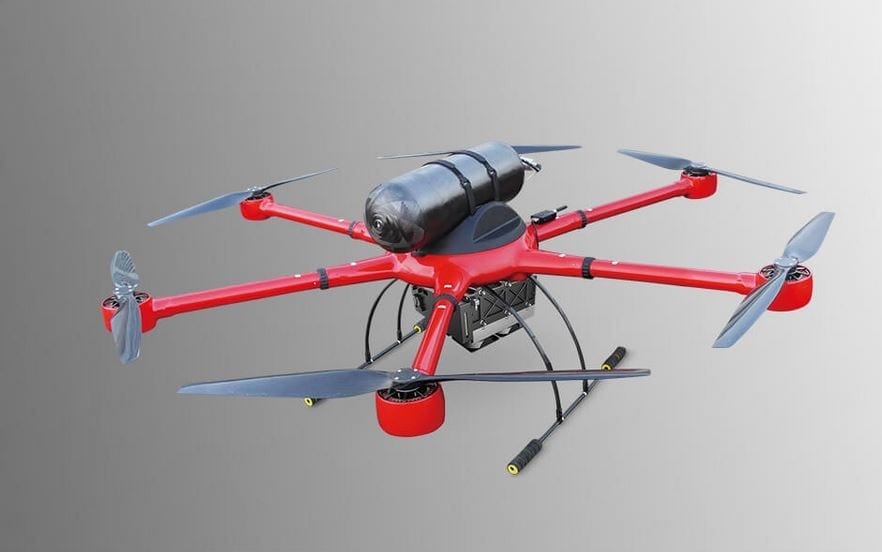
MMC’s HyDrone 1550 multicopter equipped with 1800W H1-Fuel Cell
Final Words
Summing up all of this discoveries, the author points that fuel cells are stirring up the attention and are a potential source of propulsion that could be used in future drones, especially in the development and use cases by the R&D centers of aviation industry.
Due to its effective hydrogen storing methods, light and highly efficiency of the fuel cells, as well as the further development of high specific energy batteries, this type of propulsion could see massive use in the future.
Citation: Issues related to fuel cells application to small drones propulsion, J Dutczak 2018, IOP Conf. Series: Materials Science and Engineering 421(2018) 042014,4 http://iopscience.iop.org/article/10.1088/1757-899X/421/4/042014/pdf – doi:10.1088/1757-899X/421/4/042014



